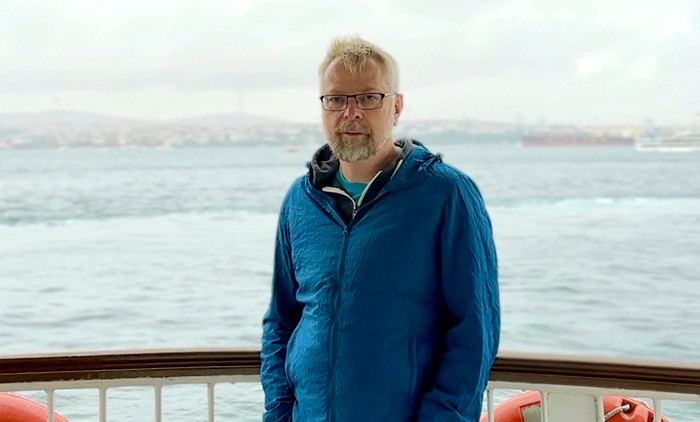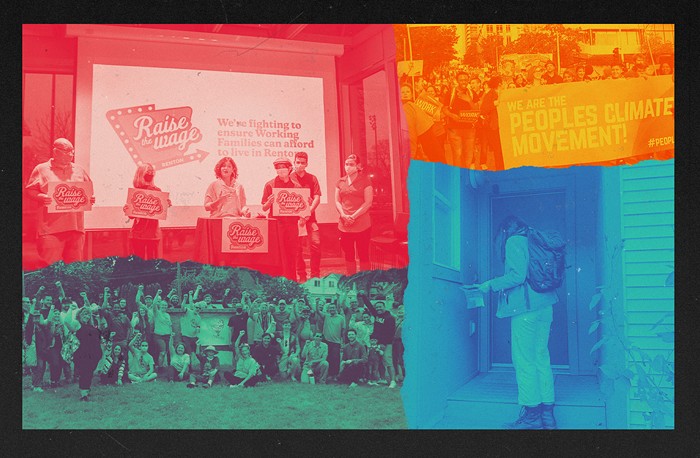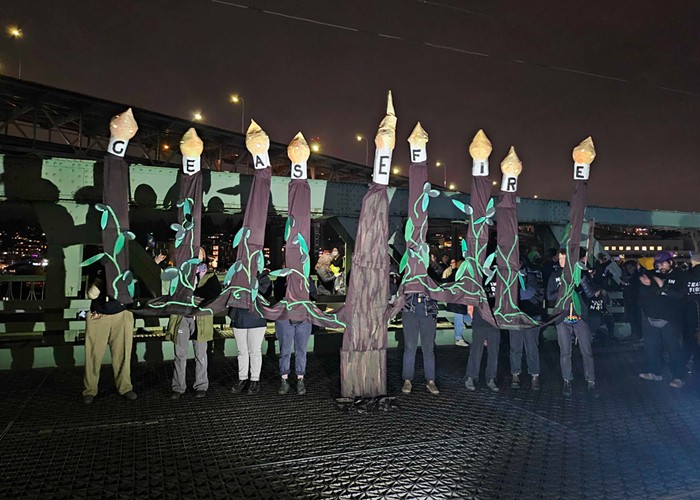The morning after voters rejected both freeway options for replacing the Alaskan Way Viaduct in March, Seattle Mayor Greg Nickels, Governor Christine Gregoire, and King County Executive Ron Sims held a press conference at which they vowed to work together to come up with a solution that everyone could live with through a "collaborative," "consensus-building" process. In the meantime, they said, they would begin work on the $915 million projects on which everyone could agree—the north and south ends, which, like the viaduct on the central waterfront, require replacement or major repairs.
Implicit in the elected officials' promise was the assumption that all the options were now on the table—including Nickels's and Sims's preferred solution, the surface/transit alternative. (Nickels, who initially supported the tunnel, appears to be moving toward surface/transit.) "From our perspective, we aren't working on any projects that would preclude any options," mayoral spokesman Marty McOmber says now. However, surface/transit proponents have begun to worry that the proposed project list may set their alternative up for failure—or preclude it altogether.
Looking at the project list, it's clear their concerns are valid. The concerns start at the north and south ends of the viaduct "project area," where state department of transportation (WSDOT) documents outline plans to "build new SR 99 from Holgate to Royal Brougham" and to strengthen the existing six-lane viaduct just south of the Battery Street Tunnel. The problem with these proposals for the surface/transit option, according to Cary Moon of the pro-surface/transit People's Waterfront Coalition, is that it would require six lanes of traffic to squeeze to four lanes right as 99 hits downtown—a recipe for traffic bottlenecks. "You can't build a six-lane highway on either end of the city, going into the city, and expect to manage traffic in the middle," Moon says. In the surface/transit option Moon envisions, traffic on 99 "would go from six lanes to four well north of the Battery Street Tunnel" and be slowed down to in-city speeds well outside downtown. Under WSDOT's proposal, however, that would be impossible.
WSDOT viaduct project director Ron Paananen says the north and south viaduct projects "should not preclude any particular solution on the waterfront," although he acknowledges that "we have a little work to do" on the south end to develop a plan that works with both the surface/transit and waterfront freeway proposals. "We designed a roadway section down there that anticipated there would be a six-lane tunnel or a six-lane elevated" freeway, Paananen says. Now "we have to make sure it works with a surface solution as well."
Moon says she's also "nervous" about plans to "upgrade" the Battery Street Tunnel, which many surface/transit proponents would prefer to take out of commission. (Additionally, keeping a link between the tunnel and the waterfront would require steep new ramps leading up from the waterfront, because the tunnel is so much higher than the waterfront.) "If [WSDOT] is putting money there, that's scary," Moon says. Paananen confirms Moon's fears, noting that WSDOT has always planned "to continue to use the tunnel in some fashion," whatever option is ultimately picked. "It could be one lane [in each direction], it could be two, but we're anticipating the long-term need for the Battery Street Tunnel," Paananen says.
WSDOT's plans, whatever option is chosen, also include two new east-west viaducts over SR 99 to serve freight traveling to and from the Port and from Ballard—one at South Atlantic Street, the other at Royal Brougham Way. Although both would improve freight mobility on the waterfront, they also might ensure that freight continues to travel on the waterfront in the future; a surface/transit proposal, in contrast, could involve relocating freight to routes elsewhere in the city. Four to five thousand trucks traveling on the waterfront daily may or may not be a problem, depending on how well they're handled, but the two new east-west elevated roadways could preclude other freight- mobility solutions. Moreover, at $500 million to $600 million, they're the most expensive components of this first phase of the project.
While the city, state, and county start working out the details of early construction projects, surface/transit supporters, neighborhood groups, and downtown business interests are working to come up with a strategy for the waterfront they all can agree to. Once they come up with what that looks like, they'll put together a letter expressing their support for a specific strategy. The goal, Moon says, is to keep the state from hijacking the process, which ideally would be run by the city and county with input from the state. "We want there to be a public process where officials say, 'We messed up. We shouldn't have tried to ram this [freeway] down your throats,'" Moon says. ![]()


















